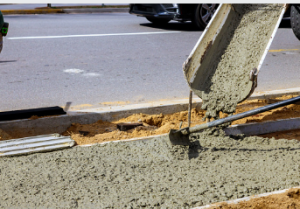Concrete can be tough, but with some tips and tricks, it can be much easier to deal with. You can also avoid a lot of common mistakes.
Prevent bleeding
Bleeding is a problem that can affect the strength and durability of concrete structures. Excessive bleeding can result in water voids and permeability, weakening the bond between the cement paste and the concrete and aggregate. However, there are ways to prevent bleeding and repair the damage once it occurs.
 The best way to prevent bleeding is to avoid placing excessive water on the surface of concrete slabs. Concrete bleeds because of the upward migration of water released during mixing. In some cases, the bleed can form a blister and flake off the top layer of the concrete. This process is referred to as laitance. Aside from that, a plane of weakness can form on the surface of the concrete, resulting from an improper link between two layers. Adding more cement to the mixture can reduce the amount of bleed.
The best way to prevent bleeding is to avoid placing excessive water on the surface of concrete slabs. Concrete bleeds because of the upward migration of water released during mixing. In some cases, the bleed can form a blister and flake off the top layer of the concrete. This process is referred to as laitance. Aside from that, a plane of weakness can form on the surface of the concrete, resulting from an improper link between two layers. Adding more cement to the mixture can reduce the amount of bleed.
Another factor that can increase the bleed rate is the presence of fine aggregates in the concrete mix. Since the particles are smaller than the larger rocks, they tend to have more exposed pores. Additionally, the water content of the concrete has a large impact on the bleed rate. Increasing the w/cm ratio will decrease the water tightness of the concrete.
In addition, fine aggregates tend to absorb more water than larger rock particles. That is why it is important to use the appropriate concrete mix to prevent bleeding. Adding a supplementary cementitious material, such as fly ash, can also help.
It is important to note in AdelaideCityConcreting Concreting Adelaide that the bleed rate will decrease after 30 minutes. If a bleed is still occurring, it is recommended to delay finishing operations. As a result, the bleed will become less of a problem, and the concrete will not be damaged as badly.
The key to preventing a bleed is to take proper precautions during concrete production. These precautions include the addition of supplementary cementitious material and the use of an air entraining admixture. Air-entraining admixtures can reduce the bleed rate by increasing the cohesion of fresh concrete.
The height of the concrete also has an impact on the bleed rate. A taller concrete will have a higher bleed rate. Likewise, lower-height concrete will have a lower bleed rate. Moreover, the ratio of w/cm and the concrete’s water quantity will greatly impact the bleed rate.
Finally, it is important to wait until the bleeding has ceased before completing the next step in the construction. The bleed can cause the concrete’s top layer to flake off quickly. For example, a high bleed can damage the concrete and reinforcement bond. To reduce the bleeding, remove the bleed water before the second floating process.
Cure concrete
Curing concrete is important to maintain its strength for many years to come. During the curing process, the chemical reaction allows cement to hydrate. This process helps increase the durability of concrete and its resistance to abrasion and water. In addition, it helps to keep the surface of the concrete moist for a long time. It also helps to increase the microstructure of the concrete.
The time it takes to cure concrete depends on the concrete mixture and the finishing methods. The American Concrete Institute recommends giving concrete slabs at least 24 hours to cure. You should also leave them for a minimum of two days before parking a car on them. However, this will vary based on the concrete’s mix and location.
You should leave the concrete for at least a month to complete the curing process. After this time, it will be strong and stable. If you decide to paint or stain the concrete, you should wait at least another three months before doing so.
If you cannot leave the concrete for the required time, you should take measures to ensure it is not damaged. Some ways to protect the concrete from the elements include placing insulation and covering it with polythene sheets.
You should also protect the surface of the concrete from evaporation by using a protective film. Water is an essential element in the curing process, and you should use the best techniques available to ensure that the surface does not dry out.
Once the concrete is cured, you should continue to monitor its moisture levels. You can do this by using sprinklers set at the proper spacing. Alternatively, you can use a ponding method for curing flat surfaces. Alternatively, spray the concrete with liquid form material applied with a roller or brush.
Another way to cure concrete is to apply an impermeable membrane. You can use an oil-based membrane or a water-based membrane. Oil-based membranes require a bit more effort to remove than their water-based counterparts.


